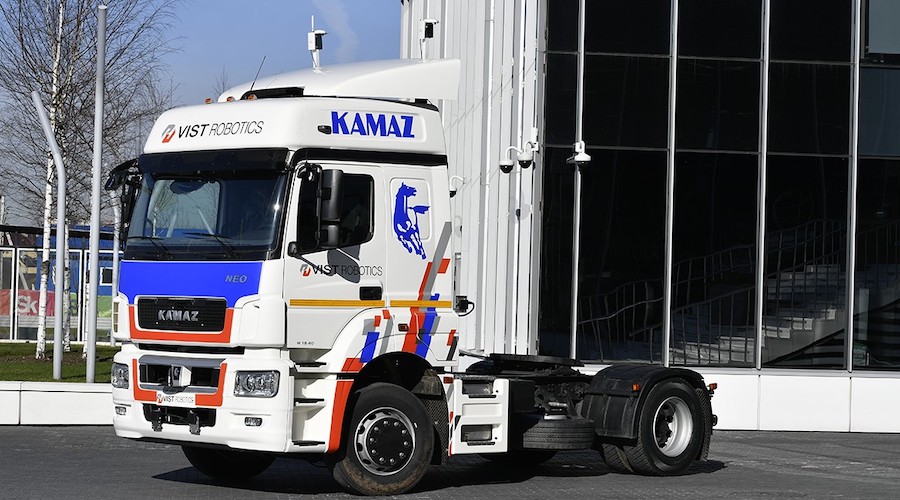
Moscow-based Vist Group, a subsidiary of Helsinki-based Zyfra, announced this week that it launched a robotized towing truck project together with Nazarbayev University and Russian truck maker Kamaz.
Using a previous experience robotizing the BelAZ 7513R truck and BelAZ 78250 front loader for open-pit mining, Vist said that it now wants to upgrade the five-wheel towing truck Kamaz Neo. The plan is to equip it with computer vision systems that will allow it to detect a range of objects like people, animals, traffic barriers, cones and autonomously recalculate the route considering this kind of obstacles.
“As a part of the project we have designed a computer vision module for a robotized truck on a base of Kamaz 5490 Neo chassis, adapted computer appliance complex, developed and integrated automated planning and self-adjusting to obstacles route steering systems,” said Artem Fedotov, head of the project at Vist Group in a media statement.
Fedotov said that the deadline to complete the adaptation is September 2019.
Europe is about to see a driver shortage crisis of 150,000 people and that a similar situation will take place in the US.
According to those involved in the project, the need for this type of robotrucks is growing. Based on a series of statistical reports, they assure that Europe is about to see a driver shortage crisis of 150,000 people and that a similar situation will take place in the US. “The fully robotized truck could partially solve the problem, at least within industrial zones,” the media statement reads.
The industrial tech firms say that based on their research and results, not only autonomous driving but also autonomous drilling improves productivity. Their data show that automated drilling rises productivity by 16%, while autonomous guidance from hole to hole pushes productivity up by 18%.